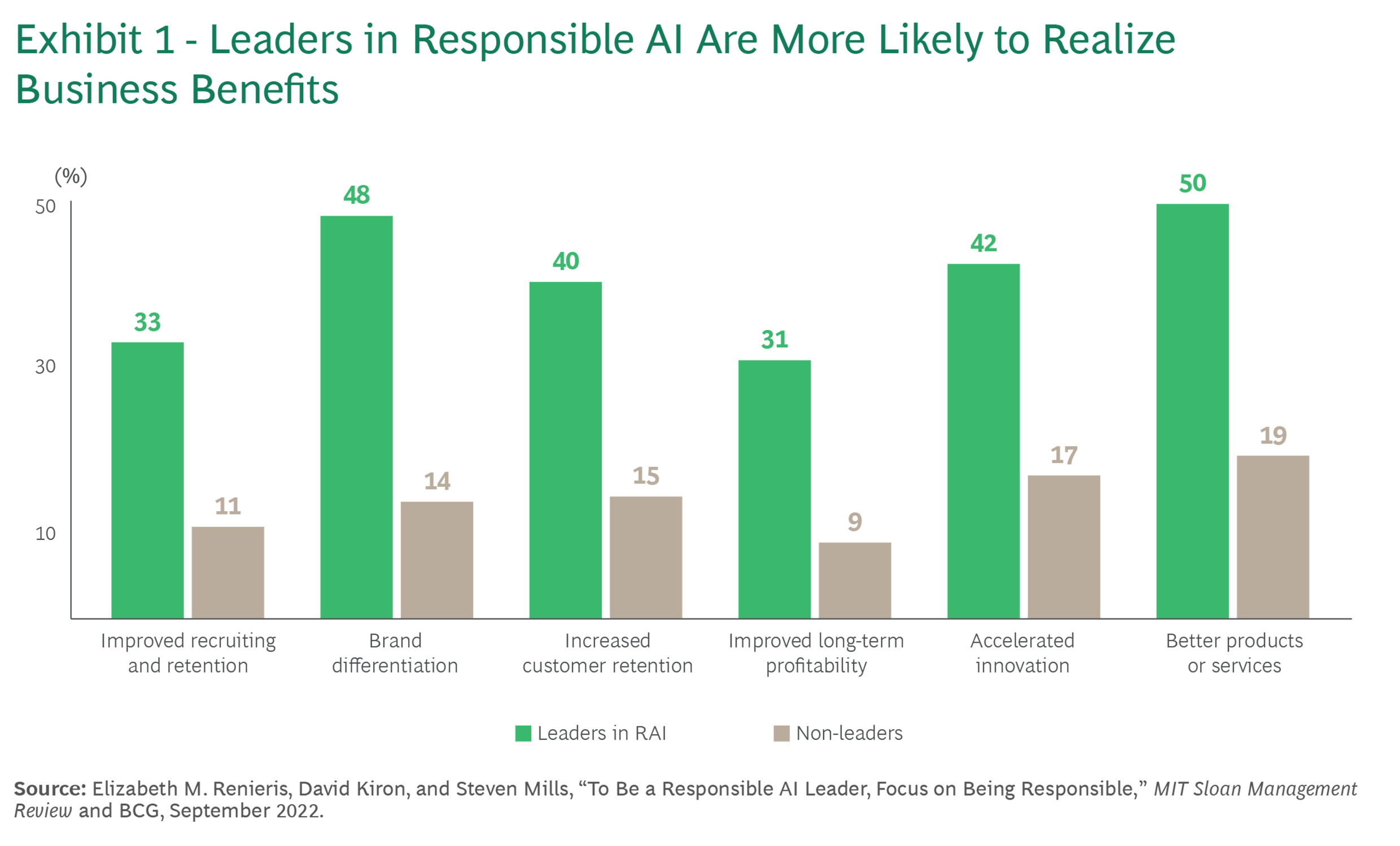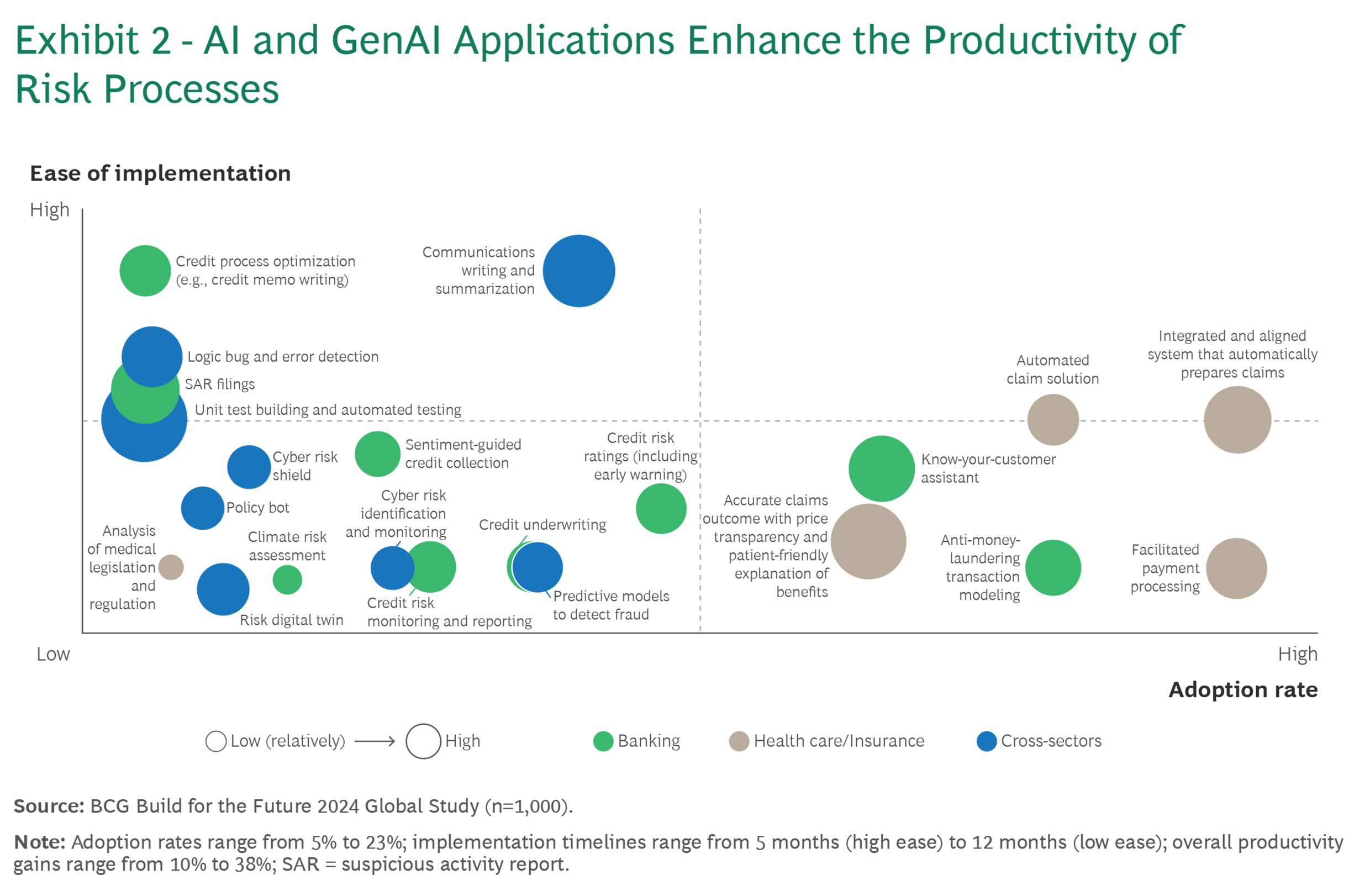Managing risks to accelerate the AI transformation

In an increasingly volatile world, where navigating risk is a core leadership responsibility, advanced AI models are poised to become indispensable tools for CEOs. Within the next five years, these models could support more than a quarter of a CEO’s responsibilities and transform how companies manage risk. However, the immense potential comes with unprecedented risks. To safely unlock the value of AI, CEOs must combine visionary leadership with strong risk management.
CEOs should look to their risk and compliance (R&C) functions to accelerate AI-driven transformations. Across industries, R&C plays a critical role in setting the guardrails to define an AI strategy that balances outcomes and risks. Positioned at the forefront of AI adoption—particularly in health care, banking, and insurance—R&C can guide the organisation across three key dimensions: managing AI-generated risks, transforming overall risk processes, and enabling risk-based decision making.
The big picture
A strong initial focus on mitigating risk is essential, beginning with a comprehensive responsible AI (RAI) framework. By embedding ethical practices, safeguarding data privacy, and upholding regulatory compliance and reputation, R&C can support secure scaling across the enterprise without stifling innovation. A well-executed approach can triple an organisation’s chances of fully realising AI’s advantages.
AI and GenAI applications are already delivering substantial gains in risk processes, automating routine tasks and reducing time spent on routine tasks such as risk report generation by up to 50%. Beyond boosting efficiency, integrating AI into risk processes enhances effectiveness and quality, allowing R&C functions to respond to threats and opportunities faster and with greater accuracy.
AI can also transform strategic decision making, enabling a shift to risk-based, dynamic decision models. With AI-driven insights, R&C functions can adapt to evolving risk landscapes in real time, aligning operations with resilience-focused strategies that maximise economic value. AI supports risk-based scenario planning and identifies key risk indicators, empowering organisations to anticipate challenges and capitalise on opportunities.
To prepare for transformative change, R&C functions must shift their focus from low-value to high-value activities and emphasise human-AI collaboration. This mindset enables R&C to redefine risk management while evolving its governance and operating model. Building capabilities in analytics, data validation, and AI ethics and adopting scalable platforms will allow R&C to fully harness GenAI’s potential and deliver substantial value.
Managing AI-generated risks
R&C functions have a unique opportunity to unlock the transformative potential of GenAI. With the ability to evaluate both the quality and risks of AI solutions, R&C can strengthen the business case for these technologies by distinguishing real value from hype.
Three AI-related risk categories are particularly significant to address: quality, safety, and security. Safeguarding quality ensures that AI consistently delivers the intended value, addressing challenges such as misinformation, low-quality content, and misaligned responses. Managing safety risks involves promoting fairness by guarding against unintended biases, harmful stereotypes, and offensive content. Mitigating security risks focuses on data protection and intellectual property—countering threats such as data leakage, system manipulation, and operational disruption. Security concerns are heightened as malicious actors exploit AI capabilities, including the use of deepfakes, significantly escalating cyber risks and fraud.
In response to these multiple risks, regulators worldwide are introducing comprehensive guidelines and AI-specific legislation to ensure responsible use, making regulatory and policy compliance more demanding. Chief among these is the EU’s AI Act, which introduces a four-tiered risk classification—unacceptable, high, limited, and minimal—for AI systems. High-risk applications are subject to stringent requirements, including third-party audits and registration. The act also mandates transparency for AI systems interacting with individuals and assigns compliance obligations based on value chain roles, such as provider or distributor. To comply with the act, organisations must develop an AI inventory and implement tailored risk mitigation measures, underscoring the importance of proactive regulatory adherence.
Implementing a comprehensive RAI framework is essential for managing risks and promoting the ethical use of AI in a rapidly evolving environment. By prioritising responsible practices, organisations can ensure regulatory compliance, uphold ethical standards, and thoughtfully evaluate the benefits and risks of each GenAI application. This approach not only mitigates risks but also unlocks business benefits and serves as a market differentiator. (See Exhibit 1.) To realise meaningful value, organisations must embed RAI practices across the AI product lifecycle.

Transforming risk processes
Initial AI pilots are primarily focused on automating labour-intensive, repetitive tasks, with use cases delivering efficiency gains of up to 40% to 50%. Notably, these benefits extend beyond the R&C function to positively impact other business units, especially those involved in operational processes. For example, branches and back-office operations can benefit from R&C’s simplification of control processes in areas such as know-your-customer procedures in financial institutions and customer onboarding across industries—freeing up time for commercial activities and enhancing corporate profitability.
Strategic AI deployment goes beyond operational efficiency gains, enhancing decision quality, driving growth, and increasing shareholder value across industries. However, organisations face the challenge of selecting AI use cases that align with their specific needs. Given the many options available, choosing those with the highest impact on process efficiency and decision making while minimising risk is essential. R&C functions can play a pivotal role by balancing potential risks and rewards. In lending, for example, AI models can double the rate of automatic approvals by analysing untapped data sources, such as financial transactions, to more accurately assess repayment capacity without increasing risk.
To navigate this complex landscape, companies need a strategy that maximises the impact of AI initiatives in supporting R&C. In our experience, a robust strategy begins with identifying and prioritising high-impact AI value areas that align with strategic goals. These priorities should deliver a competitive edge by targeting critical aspects in the risk value chain. By focusing on these areas, organisations can implement scalable solutions that directly address essential risk requirements.
Exhibit 2 highlights how targeted AI and GenAI can address multiple areas within R&C, enhancing efficiency across industries.
